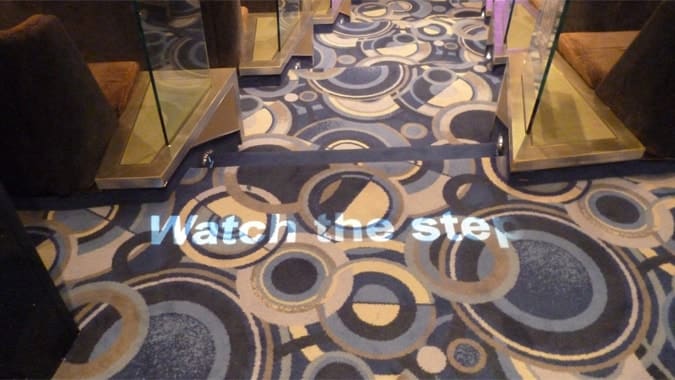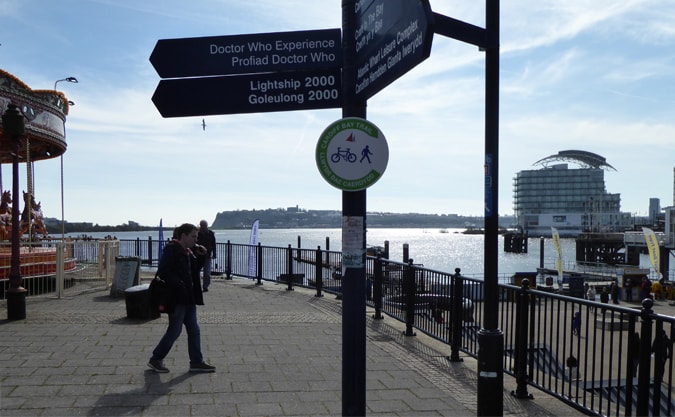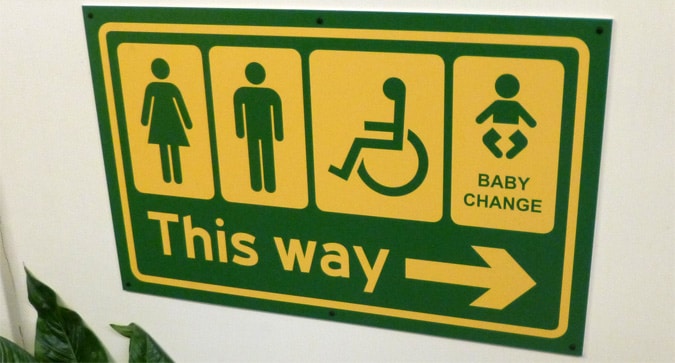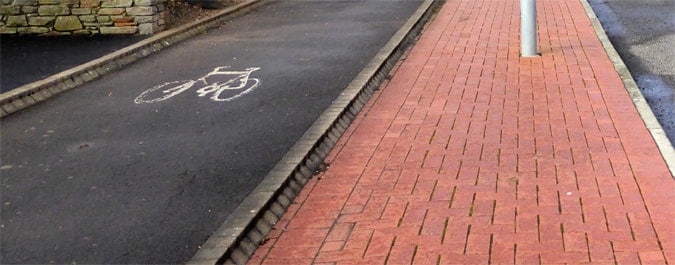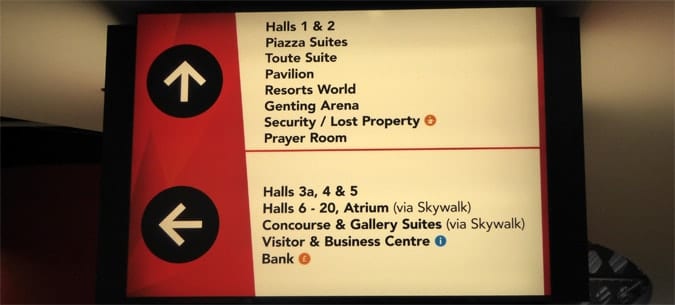Last Updated on June 9, 2023
Digital signage is increasingly being used in wayfinding and navigation for guiding users. In this post a look at digital signage in indoor environments.
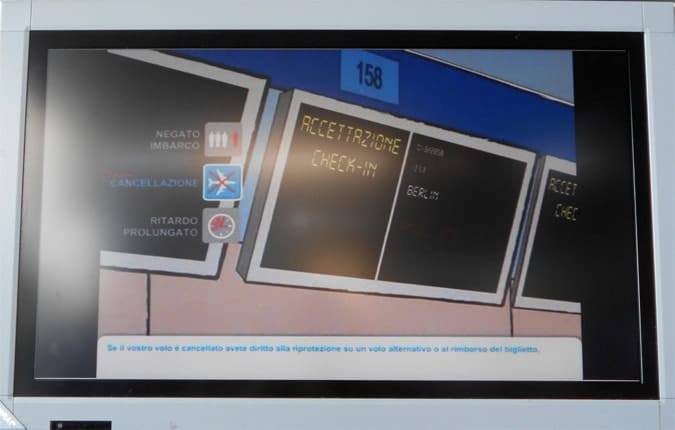
Table of Contents
Introduction to Digital Signage and Wayfinding
In this modern world, we are finding that digital media is used increasingly, as stakeholders seek to find what can at first (and often are) dynamic solutions to guiding people around the environment in question.
It might be an airport, shopping mall, tourist attraction, hotel, hospital or outdoor attraction.
Wayfinding and guiding people is important in all of these locations and for a number of reasons including to:
- Ensure safety
- Guide people for commercial gain
- Improve customer and user experience.
In many of these locations, electronic signage is being used in some form more and more, but still, many other locations are sticking with the traditional use of static (no electronic) signage.
- So which option is the best? Static or digital signage?
- When should electronic digital signage be used and not used?
- What are the pros and cons of using digital signage?
- Should you use static or digital signage?
These are key questions that you need to ask yourself if you are planning a wayfinding system and are looking for a balance that makes navigating intuitive for users, whilst at the same time, does not clutter signage spaces, does not confuse and stress users.
Over-signage, both for static and electronic signage, can be a common mistake. Ignoring the use of space and the use of people as tools in wayfinding can also be a mistake.
So let me answer many of the questions you might have so that your decision-making is made easier.

There is a clear issue and confusion by those who implement and need wayfinding solutions because we are in what one might describe as a grey area in that there is such as mismatch of static and electronic signage in so many locations.
There are no hard and fast rules as to which type of signage it is best to use or which needs to be used.
Go to any UK airport, such as Manchester Airport, and you will see a real mix of signage types and the use of space.
Many locations (and especially airports) are dynamic spaces that are used to cater to such a diverse range of users and need that a mix of both signage types really becomes the most practical solution.

Some Issues and Considerations
The cost
The cost of digital signage solutions is without question one of the main issues faced by many of you who are creating or improving an existing location’s wayfinding strategy.
The financial cost though is not the only consideration you need to factor into your planning.
You need to carefully consider the lifeline of any digital signage and factor in how easy and adaptable or not, the signage is.
The projected lifetime of the signage in terms of time needs to be evaluated against the cost of non-digital solutions.
Sometimes, such as for a tourist attraction, you can often find that a digital solution just is not viable and the correct solution.
Over-Reliance on Technology
The danger of over-reliance upon technology is rarely discussed as the push for dynamic information and solutions pushes forward.
We want information and we want it fast and now!
We are in a post-modern world in which we lead supposedly very busy lives and in which we are anxious for information and want it at our fingertips.
The problem though with this instant information, is that we begin to rely upon it and can forget how to use non-technological solutions when called upon to do so.
I have and will be writing further articles on wayfinding and over-reliance on technology.
So for now the key point I will make is to say that you need to consider backup procedures and solutions.
You may feel that technology failing is an anomaly. Yet, from my own travel experiences, it is actually already quite surprising how often these technologies fail.
I have experienced frozen departures boards, power cuts, and simultaneous information from different electronic sources providing competing information.
So, with your digital signage, DO consider:
- What happens if there is a power cut?
- What supporting aids are in place?
The Benefits of Digital Signage
The true benefits of digital solutions are the ability to provide real-time information to users and to use data management such as for crowd control (such as peak times or in emergency situations) and the ability to easily change information, such as boarding departure gate information in airports.
The benefits of digital solutions are quite easy to see and are well understood. The key is to use these solutions BUT where they are actually needed and where they are cost-effective.
Combining Wayfinding with Advertising
One of the most basic rules of wayfinding, traditionally, has been to never mix directional and advertising signs.
The two have very different purposes and normally it is best to ensure that the two are kept very separate.
Advertising hoardings, for example, should never ever block navigational signage.
Hence, it is often best to allocate specific areas in a location in which to cluster signs. In other words, create one space and only have advertising in that location.
Digital signage though gives us another option and one great example is from Birmingham International Airport (BHX) in England

If you have an arrivals area which is only used by a certain group of passengers at a certain time of year or day, and you only thus need to direct passengers at certain times, why have a static sign which, for example, welcomes visitors or which directs.
If this signage was digital, for the 8 months a year when there are no Chinese visitors into the airport, then the large signage space could be advertising a local attraction or a local business or product and be a useful source of income for the airport.
The cost of electronic digital signage in this example is self-financing.
You might have noted that I included ‘Welcome’ signs under the umbrella of wayfinding.
In my opinion, wayfinding is about the whole experience of getting from A to B i.e. the experience of getting between locations.
It is not enough, I suggest, just to get somewhere quickly or efficiently.
Environmental Considerations
Different environments have very different navigation and user needs and so the approach to wayfinding needs to be different.
Car parks are a great example of where digital solutions ARE a great resource and help.
Directing users to the areas of car parks where there are vacant spaces or to the nearest alternative car park, can be a great use of dynamic signage.
Hospital Wayfinding
The mood and temperament of the user in a given situation can impact greatly on the ability of a user to successfully navigate through a given space.
Hospitals are a good example of a location in which many users might be stressed, extra-emotional, and often less attuned to what is going on around them for concern over medical matters for themselves, family, friends, and so on.
The need thus for very clear, bold, uncluttered, and up-to-date signage, I would argue, is more important than ever. Yet hospitals are very often the worst in terms of wayfinding implementation.
Digital signage has begun to place a role in hospital navigation, but with a well-planned, well-thought-out, well-executed, and well-maintained strategy, the need for digital signage is limited.
Certain areas of the hospital though can benefit greatly from a digital solution, particularly, for example, if you have more than one on-site car park.
Providing clear information on which car park has available spaces is a simple way to make the visitors’ experience a much better one from the very start.
Airport Wayfinding
Airports are often the size of mini-cities and truly dynamic locations in terms of the level of activity, movement, and interaction that takes place within their spaces. Both static and digital signage makes sense in airports.
The biggest problem most airports have is their contingency for when the electronic signs fail and I have experienced this myself a few times.
Utter chaos is the only way to describe what can happen. Having individuals trying to shout instructions to several thousand noisy people rarely works as the backup solution.
The contingency plan is essential in these environments.
Tourist Attractions
A classic consideration for attractions, more so than airports and hospitals, is that many attractions use large outdoor spaces as the main location of orientation (time-wise).
Issues such as how well any digital signage will perform in outdoor environments at night and day and in all weather conditions need to be considered carefully.
Outdoors v Indoors
A perhaps obvious consideration, although one I have seen overlooked before by stakeholders when buying in signage, is whether or not the signage will be used indoors or outdoors.
If you are a tourist attraction, or perhaps an airport looking to sign the external areas, think in terms of all-weather signage.
A digital outdoor sign will be of little use if it cannot stand high wind or will have problems operating in inclement weather.
Static signage can very often do the job very well, so do not think that a digital signage solution is always needed.
There are situations nonetheless, in which digital signage outdoors can be a great solution, one example being the popular outdoor Airport Text Zones which I discussed in the last post.
The Future
Static signage will always be needed and will always play a role in every wayfinding system, no matter how far the digital era moves forward.
Users at a music festival (take Glastonbury for example) will very often prefer to navigate with non-digital signage, because of the hassle of ensuring that their phones are charged and having to always rely on and need to take their phones with them.
Do consider carefully issues such as contingency in using digital solutions and do realize that technological solutions are not always needed.
I will discuss more actual digital solutions in the coming posts. If you are looking for a digital solution please contact us.
Dr Paul Symonds has a PhD in Wayfinding from Cardiff Metropolitan University in the UK. Paul works with the signage industry, airports and other locations providing wayfinding audits, consultancy and training.

